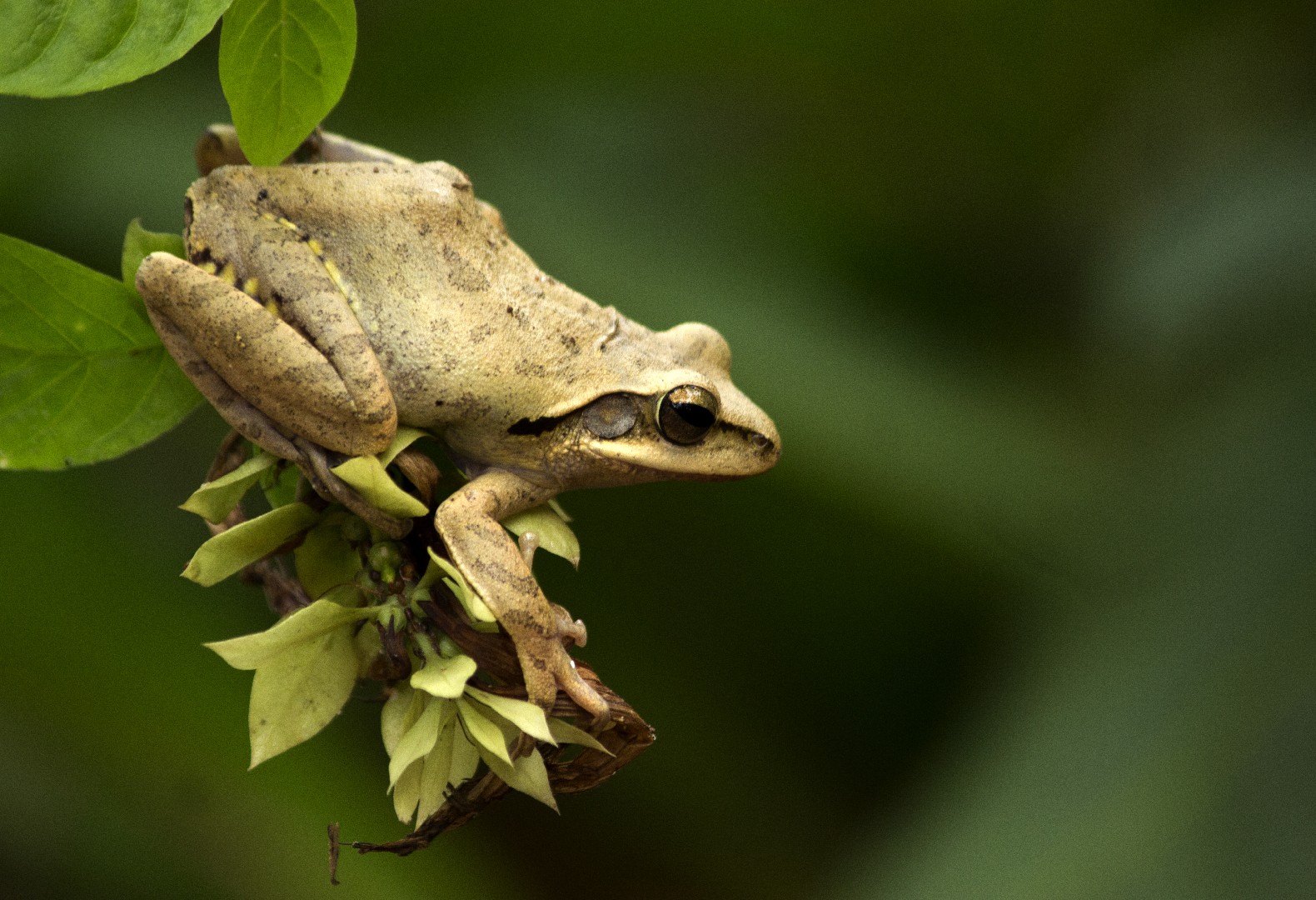Indian tree frog
A species of Whipping frogs Scientific name : Polypedates maculatus Genus : Whipping frogs
Indian tree frog, A species of Whipping frogs
Scientific name: Polypedates maculatus
Genus: Whipping frogs
Content
Description People often ask General Info
 Photo By Sujith V Gopalan , used under CC-BY-SA-4.0 /Cropped and compressed from original
Photo By Sujith V Gopalan , used under CC-BY-SA-4.0 /Cropped and compressed from original Description
Indian tree frog (Polypedates maculatus) is a common and vocal amphibian that has adapted to a number of habitats--including the foothills of the Himalayas, where a subspecies dwells. It secretes mucus to ensure that its skin does not go dry.
People often ask
General Info
Lifespan
5-12 years
Diet
Indian tree frog primarily feeds on insects and small invertebrates, particularly favoring spiders and beetles. This nocturnal species showcases an opportunistic feeding style, capturing meals even within aquatic environments.
Appearance
Indian tree frog is a medium-sized frog with smooth, glossy skin. Its coloration runs from greenish-brown to grey, often mottled with black patches to aid in its camouflage. Uniquely, it features large, bulging eyes with a horizontal elliptical pupil, and a visible tympanum behind the eye. Its legs are long, suited to jumping, with webbed feet augmented by adhesive discs for tree climbing. There's no significant appearance difference between genders.
Behavior
Indian tree frog is a nocturnal species known for its call, which is used for mate attraction during the breeding season. It selects and defends an elevated territory for calling, showing strong territorial behavior. During the day, it hides in vegetation or tree hollows for survival.
Population
Stable
Scientific Classification
Phylum
Chordates Class
Amphibians Order
Frogs and toads Family
Shrub frogs Genus
Whipping frogs Species
Indian tree frog